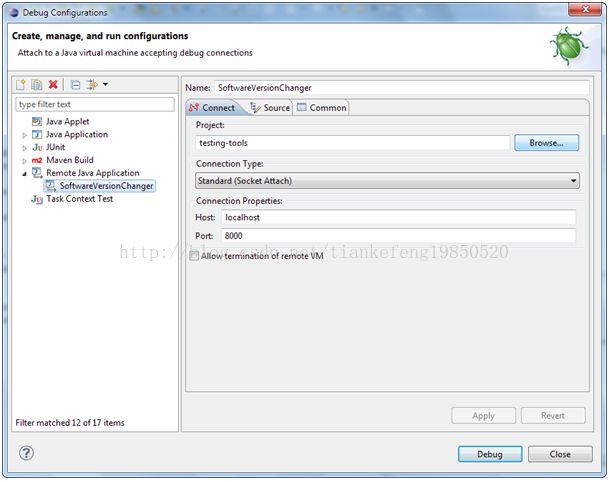Jenkins-自定义Plugin创建
1. 搭建开发环境
1.1 安装Java Development Kit (JDK)
设置环境变量 ‘JAVA_HOME’
1.2 安装Apache Maven
1. 获取最新版本从http://maven.apache.org/download.cgi 然后解压缩到你想要安装到的目录下
2. 设置环境变量M2_HOME

3. 设置环境变量M2 and set it to“%M2_HOME%\bin”
4. 添加 %M2%;到PATH环境变量
6.对%USERPROFILE%\.m2\settings.xml(USERPROFILE为用户名路径如C:\Documents and Settings下的用户)文件添加以下内容:
如果.m2文件夹不存在,你需要自己创建
Copy/Paste 以下内容到settings.xml:
d:\SW\localRepository\
org.jenkins-ci.tools
jenkins
true
repo.jenkins-ci.org
http://repo.jenkins-ci.org/public/
repo.jenkins-ci.org
http://repo.jenkins-ci.org/public/
repo.jenkins-ci.org
http://repo.jenkins-ci.org/public/
m.g.o-public
1.3 安装Integrated Development Environment (IDE)
http://www.eclipse.org/downloads/
2. 基于Eclipse开发JenkinsPlugin
2.1 Maven Projects
每个Maven工程的核心是pom.xml,他包含所有构建这个项目的信息,这个文件通常会很大而且难懂,通常我们不需要完整的理解它
当你下载一个Maven项目是,它至少包含pom.xml和src文件夹

关于Maven详细内容:
Build Lifecycle: http://maven.apache.org/guides/introduction/introduction-to-the-lifecycle.html
POM Reference: http://maven.apache.org/pom.html
2.2 导入Maven到Eclipise
为了能在Eclipse中使用Maven 工程,我们首先需要能够将其导,但是Eclipse并不支持Maven,这里我们有2种办法
1. 安装Eclipse plugin à m2e (Maven 2 Eclipse)
2. 使用Jenkins wiki推荐的方法
这里我们使用第2种方法,步骤如下
1. 打开commandprompt 然后切换到pom.xml所在的路径
2. 使用以下命令生成Eclipse工程
mvn -DdownloadSources=true -DdownloadJavadocs=true -DoutputDirectory=target/eclipse-classes eclipse:eclipse
3. Import工程到eclipse中
4. 设置系统变量M2_REPO

Java > Build Path > Classpath Variables
5. 点击New 按钮,然后定义M2_REPO 变量,内容为软件库的下载路径(见1.2,步骤6)
2.3 编译和运行plugin
在pom.xml所在的目录下,执行mvn package, 编译结果
Clean 工程: mvn clean package
2.4 使用Eclipse 调试plugin
运行以下2个命令,将开启Jenkins 调试模式,其允许Eclipse连接到remote debugging session
set MAVEN_OPTS=-Xdebug -Xrunjdwp:transport=dt_socket,server=y,address=8000,suspend=n
mvn hpi:run
我们需要在Eclipse 创建Remote Java Application

举例:
set MAVEN_OPTS=-Xdebug-Xrunjdwp:transport=dt_socket,server=y,address=8000,suspend=n
set JENKINS_HOME=d:\sw\ci\Jenkins
mvn hpi:run
3. 创建Plugin
3.1 使用skeleton generator
最简单的办法是使用skeleton generator来创建,然后在进行扩展
http://plugin-generator.jenkins-ci.org/

3.2 扩展点
必须确保plugin实现了一个扩展点
HelloWorldBuilder 类实现了Builder这个扩展点。因此在Build Step中我们可以找到它,如果实现SCM扩展点,在Build Triggers中可以找到
更多扩展点:
https://wiki.jenkins-ci.org/display/JENKINS/Extension+points
3.3 源码分析
public class HelloWorldBuilder extends Builder {
private final String name;
// Fields in config.jelly must match the parameter names in the "DataBoundConstructor"
@DataBoundConstructor
public HelloWorldBuilder(String name) {
this.name = name;
}
/**
* We'll use this from the config.jelly.
*/
public String getName() {
return name;
}
@Override
public boolean perform(AbstractBuild build, Launcher launcher, BuildListener listener) {
// This is where you 'build' the project.
// Since this is a dummy, we just say 'hello world' and call that a build.
// This also shows how you can consult the global configuration of the builder
if (getDescriptor().getUseFrench())
listener.getLogger().println("Bonjour, "+name+"!");
else
listener.getLogger().println("Hello, "+name+"!");
return true;
}
// Overridden for better type safety.
// If your plugin doesn't really define any property on Descriptor,
// you don't have to do this.
@Override
public DescriptorImpl getDescriptor() {
return (DescriptorImpl)super.getDescriptor();
}
/**
* Descriptor for {@link HelloWorldBuilder}. Used as a singleton.
* The class is marked as public so that it can be accessed from views.
*
*
* See src/main/resources/hudson/plugins/hello_world/HelloWorldBuilder/*.jelly
* for the actual HTML fragment for the configuration screen.
*/
@Extension // This indicates to Jenkins that this is an implementation of an extension point.
public static final class DescriptorImpl extends BuildStepDescriptor {
/**
* To persist global configuration information,
* simply store it in a field and call save().
*
*
* If you don't want fields to be persisted, use transient.
*/
private boolean useFrench;
/**
* Performs on-the-fly validation of the form field 'name'.
*
* @param value
* This parameter receives the value that the user has typed.
* @return
* Indicates the outcome of the validation. This is sent to the browser.
*/
public FormValidation doCheckName(@QueryParameter String value)
throws IOException, ServletException {
if (value.length() == 0)
return FormValidation.error("Please set a name");
if (value.length() < 4)
return FormValidation.warning("Isn't the name too short?");
return FormValidation.ok();
}
public boolean isApplicable(Class aClass) {
// Indicates that this builder can be used with all kinds of project types
return true;
}
/**
* This human readable name is used in the configuration screen.
*/
public String getDisplayName() {
return "Say hello world";
}
@Override
public boolean configure(StaplerRequest req, JSONObject formData) throws FormException {
// To persist global configuration information,
// set that to properties and call save().
useFrench = formData.getBoolean("useFrench");
// ^Can also use req.bindJSON(this, formData);
// (easier when there are many fields; need set* methods for this, like setUseFrench)
save();
return super.configure(req,formData);
}
/**
* This method returns true if the global configuration says we should speak French.
*
* The method name is bit awkward because global.jelly calls this method to determine
* the initial state of the checkbox by the naming convention.
*/
public boolean getUseFrench() {
return useFrench;
}
}
}
HelloWorldBuilder类中的构造函数使用@DataBoundConstructor来声明。构造函数要对变量进行赋值。
HelloWorldBuilder类中perform重载函数。构建的执行通过实现perform方法来进行自定义。每次执行编译时都会运行perform函数。它有三个参数:
Build参数是描述了当前任务的一次构建,通过它可以访问到一些比较重要的模型对象如:project当前项目的对象、workspace构建的工作空间、Result当前构建步骤的结果。
Launcher参数用于启动构建。
BuildListener该接口用于检查构建过程的状态(开始、失败、成功..),通过它可以在构建过程中发送一些控制台信息给jenkins。
perform方法的返回值告诉jenkins当前步骤是否成功,如果失败了jenkins将放弃后续的步骤。
3.4 视图配置文件
Jenkins使用了Jelly页面渲染技术,这是一个基于XML的服务端页面渲染引擎,其将基于Jelly的xml标签转换为对应的Html标签并输出到客户端。模型对象的信息通过Jexl表达式被传递到页面上(相当于Jsp的JSTL)。jelly文件以.jelly为后缀,在hudson中使用类全名的形式来查找模型类对应的jelly页面文件,如名为src/main/java/com/jysong/jenkins/HelloWorldBuilder.java的类,其对应的页面文件应该存在于src/main/resources/com/jysong/jenkins/HelloWorldBuilder目录的下。
此外hudson通过固定的命名方式来确定页面文件属于局部配置还是全局配置:config.jelly提供局部配置;global.jelly提供全局配置。config.jelly是具体的某个job的配置,global.jelly是指jenkins的系统配置。
视图有三种:1,全局配置(global.jelly)2,Job配置(config.jelly),还有就是使用帮助(help-字段名).html
1.全局配置详解
global.jelly为全局配置页面。
其中title为标题,表示要显示的内容。field为将调用DescriptorImpl内部类的方法getUseFrench(),field域会将方法去掉get并且将第一个字母小写,找到相对应的方法。description将显示描述信息。f:checkbox为复选框控件。
在每次保存全局配置时,jenkins都会调用该descriptor对象,并调用其configure方法,可以实现该方法并提供自己的定制
在DescriptorImpl中的configure方法中,可以对全局配置进行操作。save方法用于将当前Descriptor所提供的配置持久化(通过get**方法),为了使save能正常工作,需要提供配置项的get方法。
2.局部配置详解
config.jelly 的内容将被包含在扩展功能的配置中,在HelloWorldBuilder文件夹下面的配置内容是:

其中entry 表示用于交互的html表单域,title将作为表单域label的值,在界面中要显示的内容。 field表示的是HelloWorldBuilder的构造函数中的参数。如果有多个field,就要有多个相对应的参数。textbox 表示简单的渲染一个输入文本,输入的值将赋给name。
更多UI内容见
https://wiki.jenkins-ci.org/display/JENKINS/UI+Samples+Plugin




